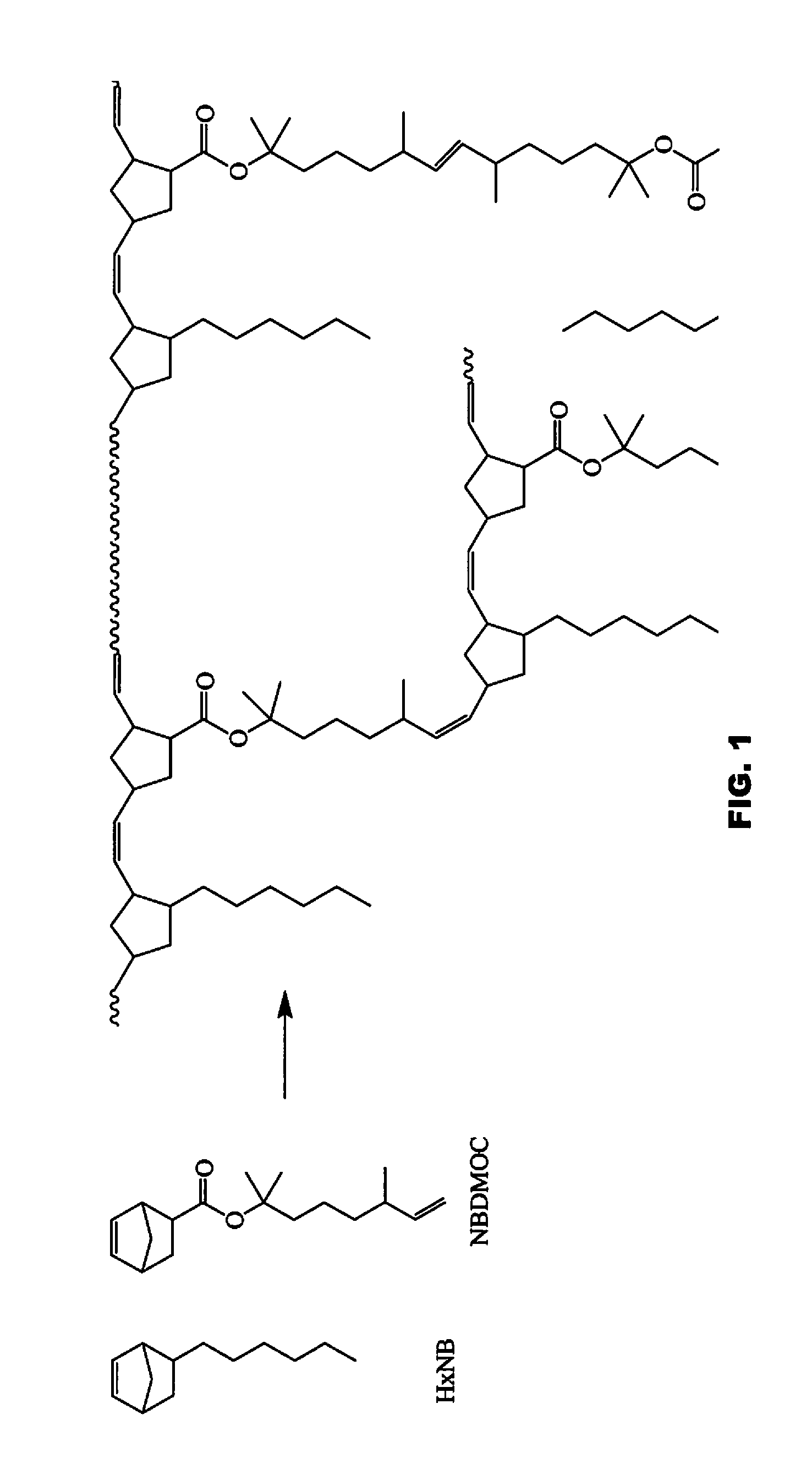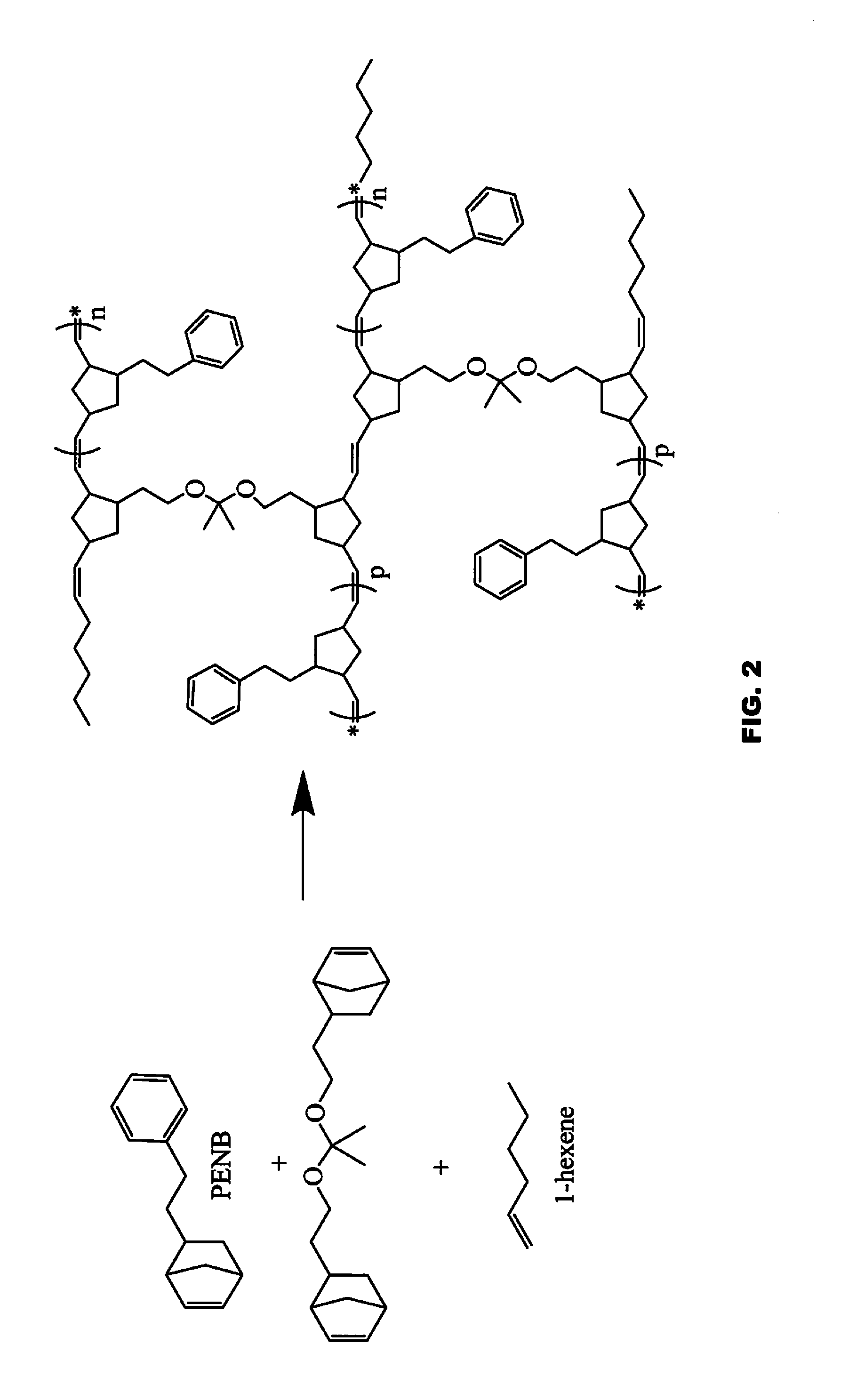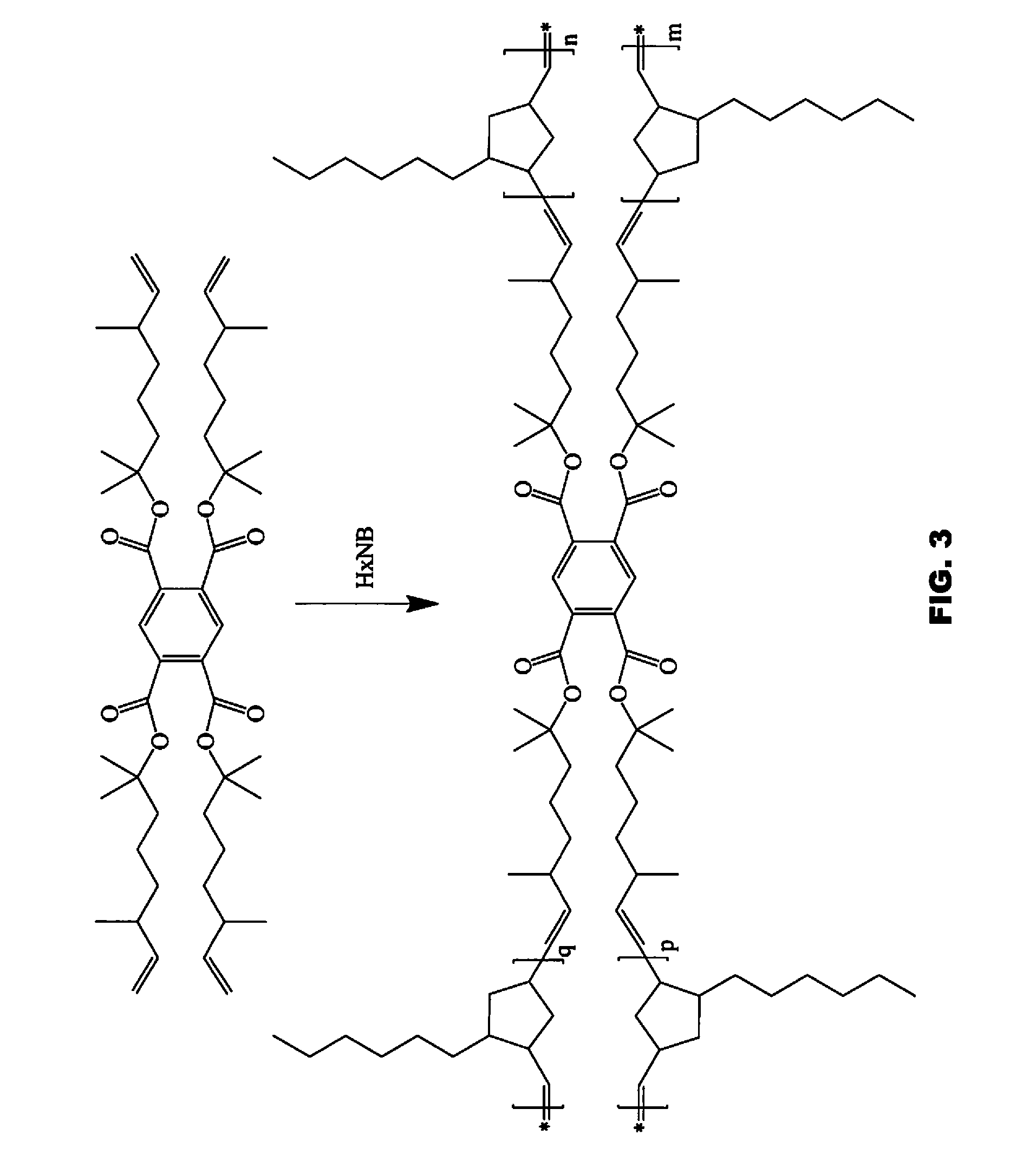Flame retardant ROMP polycycloolefinic polymers
- Summary
- Abstract
- Description
- Claims
- Application Information
AI Technical Summary
Benefits of technology
Problems solved by technology
Method used
Image
Examples
examples
[0236]The following abbreviations have been used hereinbefore and hereafter in describing some of the compounds, instruments and / or methods employed to illustrate certain of the embodiments of this invention: HexNB—5-hexylbicyclo-[2.2.1]hept-2-ene; PENB—5-phenethylbicyclo[2.2.1]hept-2-ene; NBDMOC—2,6-dimethyloct-7-en-2-yl 3,3-dimethylbicyclo[2.2.1]hept-5-ene-2-carboxylate; (NBEtO)2C(CH3)2—5,5′-((propane-2,2-diylbis(oxy))bis(ethane-2,1-diyl))bis(bicyclo[2.2.1]-hept-2-ene); NBEtOH—2-(bicyclo[2.2.1]hept-5-en-2-yl)ethan-1-ol; HexenylNB—5-(hex-5-en-1-yl)bicyclo[2.2.1]hept-2-ene; NB-Bu-NB—1,4-di(bicyclo[2.2.1]hept-5-en-2-yl)butane; (DMOBC)4—tetrakis(2,6-dimethyloct-7-en-2-yl) benzene-1,2,4,5-tetracarboxylate; Ru-848—[1,3-bis(2,4,6-trimethylphenyl)-2-imidazolidinylidene]-[2-[[(2-methylphenyl)imino]methyl]-phenolyl]chloro-(3-phenyl-indenylidene)ruthenium(II); DMF—dimethylformamide; THF—tetrahydrofuran; DMAP—4-dimethylaminopyridine; CTA—chain transfer agent; GPC—gel permeation chromatography...
example a
NBDMOC
[0238]Into a suitably sized reaction vessel were placed 2,6-dimethyl-7-octene-2-ol (67.7 grams, 0.43 mol), pyridine (200 mL) and DMAP (0.54 gram, 4.4 mmol). 5-Norbornene-2-carbonyl chloride (67.7 grams, 0.43 mol) was added to the solution at room temperature as neat. Exotherm was observed. The reaction mixture was heated up to 65° C. in an oil bath and stirred at this temperature for 17 hours. Heating was stopped and the formed salts were filtered off and washed with toluene. After evaporation of pyridine and toluene, water was added to the crude product, then extracted with diethyl ether. The organic layer was washed with water, a saturated sodium chloride aqueous solution and a saturated sodium carbonate aqueous solution, successively. The aqueous layer was extracted with diethyl ether. Combined organic layer was dried over magnesium sulfate. After rotary evaporating solvents, the crude product 115 grams was vacuum distilled by short path distillation to afford 104 grams of ...
example b
(NBEtO)2C(CH3)2
[0239]The title compound was prepared essentially following the procedures as set forth in Organic Syntheses, Coll. Vol. 5, p. 5 (1973); Vol. 42, p. 1 (1962) and as described below.
[0240]Endo / exo-NBEtOH (292 grams, 2.1 mol), acetone dimethyl acetal (100.2 grams, 0.96 mol), hexanes (300 mL) and p-toluenesulfonic acid monohydrate (0.88 gram, 4.63 mmol) were measured and transferred into a flask equipped with a Dean-Sterk apparatus. The reaction mixture was heated up in a 80° C. oil bath. After receiving about 200 mL of distillate, 200 mL of hexanes was added. When about 30 grams of MeOH was recovered, the heating was stopped. The solvent was evaporated under reduced pressure, and the crude mixture was vacuum distilled twice to obtain the title compound (101 grams, 33% yield, 55° C. / 30 mTorr).
PUM
| Property | Measurement | Unit |
|---|---|---|
| Time | aaaaa | aaaaa |
| Temperature | aaaaa | aaaaa |
| Temperature | aaaaa | aaaaa |
Abstract
Description
Claims
Application Information
 Login to View More
Login to View More - R&D
- Intellectual Property
- Life Sciences
- Materials
- Tech Scout
- Unparalleled Data Quality
- Higher Quality Content
- 60% Fewer Hallucinations
Browse by: Latest US Patents, China's latest patents, Technical Efficacy Thesaurus, Application Domain, Technology Topic, Popular Technical Reports.
© 2025 PatSnap. All rights reserved.Legal|Privacy policy|Modern Slavery Act Transparency Statement|Sitemap|About US| Contact US: help@patsnap.com



